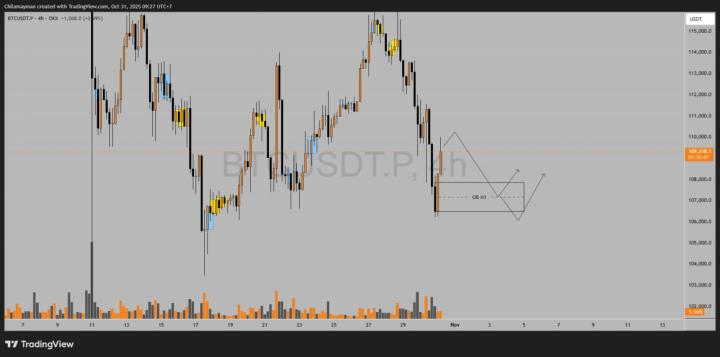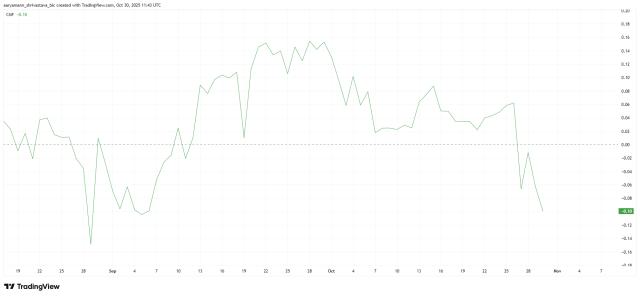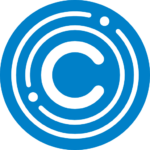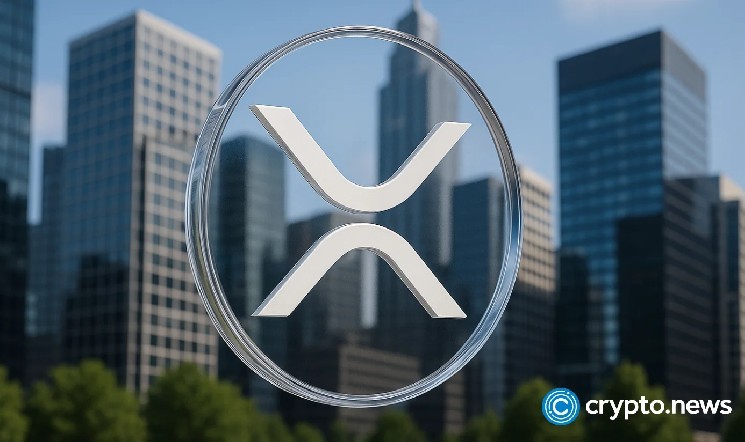Content is growing explosively, but the value system is lagging behind.
Global content and model production is expanding at an exponential rate. According to IDC, the total amount of global data is projected to reach 181 zettabytes by the end of 2025, more than triple the amount in 2020. Meanwhile, the widespread adoption of generative AI has lowered the barrier to entry for content creation to an all-time low. Open interfaces from model platforms like OpenAI, Anthropic, and Mistral have enabled the generation of text, images, audio, and code across hundreds of millions of devices, creating an unprecedented "content production flood." In this process, the boundaries between content, models, and algorithms are blurring, but the systems for value distribution and ownership have not evolved accordingly.
In reality, the existing Web2 model remains platform-centric. The text, video, or algorithmic models produced by creators ultimately accumulate in the closed databases of large content or technology platforms. The platforms control data, algorithms, and revenue distribution, while individuals receive only limited exposure or usage revenue.
From a revenue perspective, approximately 72% of the global digital content market's revenue is concentrated in less than 5% of the platform ecosystem, while the revenue share of original creators or developers has long remained in the single digits. This centralized structure weakens incentives for innovation and keeps the "content as an asset" logic at a theoretical level.
At the same time, the rapid evolution of AI models has further exacerbated the "value gap." Model training relies on massive amounts of content and data, but the contributors behind these data rarely receive any ownership confirmation or profit rebates. For example, in 2023, Stability AI publicly acknowledged that its Stable Diffusion model training data contained billions of unauthorized images. This incident highlights the structural asymmetry between "content supply" and "model revenue." When content becomes AI fuel, its economic value is absorbed by the algorithms, but it is difficult to measure and return within the system.
RWA becomes a new exploration direction
We see that this dilemma has given rise to a new direction of exploration, namely how to make content and models have asset attributes that are identifiable, measurable, and returnable.
The traditional RWA (Real World Asset) narrative focuses on the on-chain integration of bonds, real estate, and income certificates to enhance the liquidity and transparency of financial assets. However, at the intersection of AI and the content economy, the meaning of RWA is expanding from physical assets to digital production factors. Digital works, training materials, algorithmic code, and even model access rights are being redefined as "new asset units" with verifiable ownership, tradability, and profit sharing.
These trends are already evident at the capital and regulatory levels. Deloitte's 2024 "Digital Asset Outlook" indicates that by 2030, approximately 15% of the global RWA market will consist of digital content, intellectual property, and data assets, reaching a total value of $3.2 trillion. This means that "content assetization" is moving from the conceptual stage to the institutionalized stage.
Against this backdrop, the industry urgently needs an underlying infrastructure that can reliably authenticate the ownership of content, models, and algorithms, transparently measure them, and distribute revenue across applications and entities. CodexField emerged at this historical turning point, attempting to address the gap between content assetization and institutionalization through a technological approach.
CodexField's RWA Narrative
Amidst the reshaping of the content value chain, CodexField is establishing a Web3-native asset infrastructure for creators and developers, aiming to make structured content verifiable, accessible, and financially viable. The project focuses on highly reusable content units such as code, models, prompts, corpora, and images, proposing unified data encapsulation and authorization standards. This allows for on-chain ownership and tracking of this content, with returns mapped through smart contracts, thereby promoting the standardization of "content as an asset."
The CodexField architecture covers the entire content process, from storage and authorization to billing and profit sharing. Compatible with multi-chain ecosystems and mainstream storage networks, including BSC, Ethereum, Solana, and Greenfield, the system supports the use of smart contracts to define content access and commercial policies, enabling automated on-chain settlement and distribution for actions such as content invocation, subscription, and model training. This mechanism allows creators and collaborators to directly participate in the revenue stream, ensuring traceability of data usage and transparency of profit sharing.
As a key intermediary in the content assetization process, CodexField not only serves independent creators and AI model developers, but also provides a standardized "content-as-a-service" interface for platforms, facilitating the flow and integration of content assets across the Web3 and AI ecosystems. Its goal is to establish a transparent, verifiable, and financially robust content economy protocol on top of the existing fragmented content ecosystem, providing the foundation for a future "measurable content economy."
Technological innovation and implementation path
CodexField's system architecture is built on a clear premise: for content to truly possess asset attributes, it must be technically verifiable and economically measurable across all three stages: ownership confirmation, access, and settlement. This logic is a cross-layered, systematic engineering design that unifies Web3 asset registration logic, AI-powered access tracking mechanisms, and traditional financial accounting within a single, closed-loop technology path.
Structured mapping from content to assets
CodexField uses "content capsules" as its core data structure, structurally encapsulating various creative units such as text, images, model weights, corpora, prompts, and code modules. Each capsule is assigned a unique asset ID upon creation, along with the creator's identity, version information, reference relationships, and a timestamp, forming an atomic unit of asset with independent ownership verification capabilities on the blockchain.
This structure is not a simple hash registration, it is more of a "computable ownership" system, that is, it allows assets to be partially called, incrementally updated and referenced.
For example, a model can call upon only a portion of a dataset or reference a specific segment of another algorithm. The system automatically traces the dependency path and generates a corresponding citation weight. This allows content ownership to move away from relying on full attribution and towards more fine-grained structured annotation, which is the technical prerequisite for the financialization of content.
Programmable and verifiable permissions
In traditional content ecosystems, authorization often relies on contracts and manual review, lacking a verifiable basis for execution. CodexField uses LexDL and CapToken (capability credentials) to standardize and programmatically express authorization relationships.
LexDL is a human-readable, machine-executable licensing language that describes conditions such as access scope, geographical restrictions, usage type, and timeframe. Based on this, the system generates a CapToken—an access credential tied to the authorization rules. Each content call or model training requires the corresponding CapToken to pass contract verification, and usage receipts are automatically written after execution. This approach transforms "authorization" from a paper clause into a necessary prerequisite for technical execution, safeguarding creators' revenue margins while enabling automated compliance management for businesses and platforms.
It is worth noting that this mechanism is particularly critical in a multi-party collaborative environment: AI model training usually involves different data sources and algorithm contributors. Traditional methods make it difficult to define the rights and interests of each party. The licensing structure based on LexDL + CapToken can replace "human judgment" with "machine trust", providing an institutionalized foundation for future cross-institutional training and data collaboration.
Generation of Verifiable Economic Events
The value of the content and models in the CodexField system is primarily quantified through the objective act of "usage." The system generates a verifiable record for each actual call, known as a usage receipt (UR).
Each receipt contains key information about the task: the calling role, the content of the call, duration, execution efficiency, and resource consumption. It serves as a digital certificate for an economic event, tracked and calculated in real time by the on-chain system. This allows the value of content to be automatically measured based on the frequency and depth of its use, rather than relying on platform pricing or traffic flow.
Together, these receipts form CodexField's "value accounting layer." When content or models are used, the system calculates revenue distribution based on the usage data and distributes this profit directly to the relevant creators, collaborators, and data providers through smart contracts. This entire process is transparent and auditable, without the involvement of a centralized platform.
In more complex scenarios, such as when a model references multiple algorithms, datasets, or scripts, CodexField automatically allocates revenue shares by tracking these references through a "royalty graph." This graph documents the inheritance and derivation relationships between content. When a node is used, the system accurately distributes the rewards to all contributors along the path.
This mechanism transforms content profit sharing from a contractually signed agreement or platform rules into an economic activity based on "protocol-based execution." Every call, every training session, and every collaboration leaves a clear value trail on the blockchain. Ultimately, CodexField imbues previously nebulous value flows like content production and model training with the same measurability and credibility as financial assets—a crucial step in moving "content assetization" from concept to institutionalization.
Computational trust and cross-domain consistency
CodexField's execution system is built on a multi-layer verification architecture, with the core goal of finding a balance between efficiency, credibility and scalability.
In lightweight tasks, such as content retrieval or model invocation, the system generates verifiable results through zero-knowledge proofs (ZK), allowing external nodes to confirm the authenticity of the execution without exposing data details. For large-scale model inference or training tasks, CodexField uses a trusted execution environment (TEE) combined with a committee verification mechanism to ensure security while maintaining computing performance.
This design enables CodexField to flexibly allocate resources for tasks of varying intensity and sensitivity, while maintaining verifiable and reviewable computational results across the entire system. For developers who need to share computing power across different organizations or regions, this architecture significantly reduces trust costs and improves overall execution reliability.
In order to further ensure the smoothness of cross-chain collaboration, CodexField also introduced a "double bridge mechanism".
The "Receipt Bridge" is responsible for synchronizing execution results and settlement data, while the "Mirror Bridge" is used to synchronize asset status and authorization permissions. This layered structure ensures data and status consistency between different networks without sacrificing performance due to excessive synchronization.
In multi-chain deployment and cross-domain execution scenarios, it can ensure the continuity and traceability of calling behavior - no matter which chain the content is stored on, the authorization and settlement process can be fully recorded and verified in the CodexField framework.
From a system design perspective, this mechanism provides the necessary stability and compatibility for future institutional applications, and also enables content assets to be securely circulated in a wider blockchain environment.
Developer Interface
Within CodexField's overall architecture, the Gitd toolchain serves as the developer portal. It allows creators and engineers to upload content or models to the blockchain, define authorizations, and link revenue directly within the familiar Git workflow. This means that when a developer submits code or a model version, the system automatically generates a corresponding "content capsule" and authorization information, and automatically tracks revenue for future calls or references. This makes content ownership and revenue sharing a seamless, integrated part of development, rather than a complex process.
This mechanism is particularly important for collaborative projects. Multiple developers can work in the same repository, and every commit or modification generates a corresponding on-chain record. When the project is deployed or commercially, the system automatically generates revenue receipts based on these records and distributes profits based on the contribution ratio, eliminating the need for additional settlement or manual accounting. This makes collaboration transparent and provides instant confirmation of the value of each participant's work.
CodexField also incorporates the model and agent production process into its asset system through two expansion modules: Model Fabric and Agent Fabric. The former covers the entire lifecycle, from training and fine-tuning to inference and evaluation; the latter focuses on the agent's task execution and feedback loop. Together, these modules capitalize on "AI production capacity," transforming models from mere tools to economic units capable of ownership confirmation, measurement, and revenue repatriation.
In this system, developers, creators, and AI agents no longer belong to separate ecosystems, but rather form a verifiable, profit-sharing content economy network. CodexField enables this process to rely not on the platform but on the protocol itself, which is one of its most structurally significant innovations.
Establishing a new order for content assetization
CodexField is institutionalizing the value order of content and models. By prioritizing on-chain ownership confirmation and verifiable execution, it makes compliance a systemic attribute rather than an external requirement. Every authorization, call, and profit sharing by creators and institutions is based on on-chain credentials, eliminating the need for centralized audits or platform endorsements. This naturally complies with global regulatory frameworks for digital assets, data circulation, and AI model transactions.
On this basis, CodexField has built a measurable value system. Through real-time call receipts and an automated profit-sharing model, the system uses usage as its core pricing model. This allows the economic value of content, algorithms, and models to be determined directly by actual usage, rather than relying on platform exposure or contract negotiations. This mechanism transforms the concept of "content as an asset" from a conceptual foundation into a verifiable economic activity.
From a broader perspective, CodexField's practical approach is promoting the RWA (Real World Assetization) of digital production factors. Code, models, corpora, and algorithms can all exist in a manner that is "identifiable, auditable, and settleable," becoming a new type of verifiable asset. In a context where the traditional platform economy remains centered around traffic and centralized control, CodexField demonstrates an institutional innovation: replacing platforms with protocols and reconstructing trust through transparent rules, allowing production relations in the digital economy to truly possess the characteristics of assetization and autonomy.
From content assetization to the infrastructure of a smart society
The long-term significance of CodexField lies in promoting the transformation of "digital creation" from an individual activity into a part of social infrastructure. In an era of information explosion and widespread adoption of intelligent models, content, algorithms, and models are no longer merely tools or products; they are new factors of production. CodexField, with its core mechanisms of property rights confirmation, measurement, and settlement, enables the institutionalized management, circulation, and trading of these factors. Just as electricity once made industrialization possible, CodexField is making intelligent production capacity measurable, allocable, and accumulative, laying the foundation for the next phase of the digital economy.
This structural shift will fundamentally alter the relationship between content and intelligent entities. AI models will become open units capable of sharing, verification, and reward. Content creators, model developers, and institutions will no longer be dependent on centralized platforms, but will instead share revenue and governance rights through on-chain rules, forming a truly autonomous content economy. In this system, every call, training, or citation is a valuable economic event and a fundamental act of resource allocation in an intelligent society.






